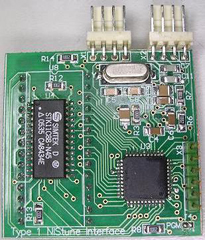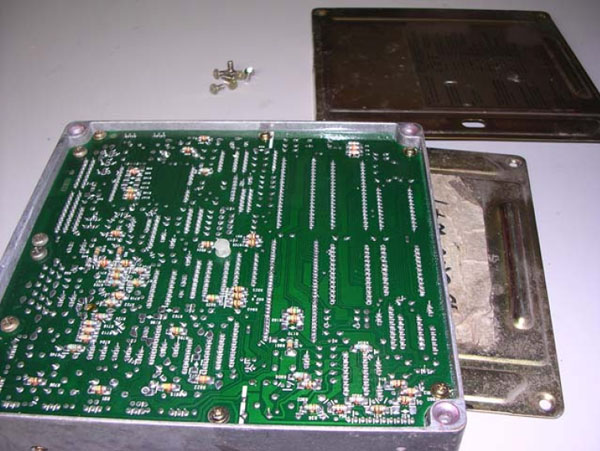Z31 Nistune ECU Tuning
Question, What is Nistune?

NIStune RealTime boards provide a way to make your factory Engine Control Unit (ECU) fully reprogramable similar to aftermarket Engine Control units for a fraction of the price. They use the latest technologies available on the market today to keep the size of the board small and cost lower.
Having your factory ECU reprogrammable means that either yourself or a knowledgeable tuner can quickly and easily retune your factory ECU with minimal installation and setup. They are tuned using the NIStune software.
Unlike any other type of daughterboards available for Nissan vehicles on the market, NIStune boards are the only real-time tuning solution available on a single small standalone board.
Once initially programmed, the NIStune board is permanently installed in the owners ECU (engine control unit). The ECU can then be tuned on a dyno via either the USB connector for Type 1 boards
The Z31 will use the type 1 board from Nistune shown below

Installing the NISTUNE board
I installed my own NISTUNE board into my ecu myself and it wasn't that hard to do with basic soldering knowledge.
First start by removing the 4 screws on both the front and back cover of the ECU being careful as they can strip the heads if the ECU was exposed to the elements.

Next you will need to clean everything that you will be soldering/un-soldering with acetone as the factory covers everything in a lacquer to protect it from the elements.
Z31 ECU ROM Tuning Reference
The list below shows which ROM set to use as a base when tuning your Z31.
| Nissan ECU Number | BIN to Start With | Nistune Board Model |
|---|---|---|
| 23710-87EXX | J30_VG30E | Type 1 |
| 23710-98EXX | J30_VG30E | Type 1 |
| 23710-01PXX | Z31_EARLY_VG30 | Type 1 |
| 23710-06PXX | Z31_EARLY_VG30 or Z31_LATE_VG30 | Type 1 |
| 23710-10PXX | Z31_EARLY_VG30 | Type 1 |
| 23710-02PXX | Z31_EARLY_VG30 | Type 1 |
| 23710-25PXX | Z31_LATE_VG30 | Type 1 |
| 23710-545XX | Z31_LATE_VG30 | Type 1 |
| 23710-21PXX | Z31_LATE_VG30 | Type 1 |
| 23710-26PXX | Z31_LATE_VG30 | Type 1 |
| 23710-18PXX | Z31_MID_VG30 | Type 1 |
Bin File Database
The links below will allow you to download Non OEM Bin files and also allow you to upload your own tune to share with Others.
Nistune Dealers and Tuners
Below is a curated list of authorized Nistune Dealers, Installers, and Tuners. If you would like to be added to this directory, please contact us via email:
Nistune Dealers, Installers, and Tuners
If you wish to be added to this list, please contact us at sales@xenonzcar.com
| Shop Name | Location | Services Offered |
|---|---|---|
| XenonZcar | 17 South Willow Street, Mount Carmel, PA 17851 | Electronics Installer/ Tuning Not Available |
| Tri-County Auto Garage | 64 Utica St, Port Byron, NY, 13140 | Tuner |
| JE Import Performance |
6600 Moravia Park Drive, Suite A, Baltimore, MD 21237 |
2WD and 4WD Dyno Tuner |
Sources Used
- 1984-1988 Nissan 300ZX Factory Service Manual
- Nistune.com
- Kvalue Data written by: Jason84NA2T Jason Butts





